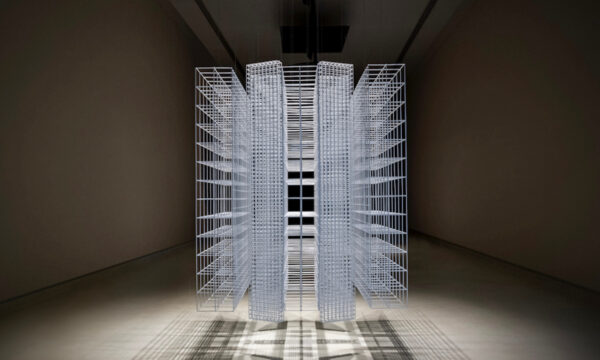Photo-Soup at Unit 24 Gallery

Right next to Tate Modern, between 21st April and 20th May 2012, Unit 24 Gallery is serving a well-balanced, though-nourishing artistic meal. Although Photo-Soup claims to be a project allowing artists to work and exhibit independently of mainstream art institutions, their exhibition in Unit 24 Gallery bring them disturbingly close – at least in a physical terms – to an eye of the mainstream curatorial storm.
The exhibition is a fifth collaborative show of the dynamically-changing group of artists. In 2009 the project opened an exhibition in a deserted bunker in East London which has been turned into the unusual venue of artistic undertakings. The show in The Bunker was followed by Photomonth Fair based in Spitalfields Market. From a fashionably alternative space of East London the project moved into international venues and subsequent displays took place in Barcelona and Mexico. Afterwards, Photo-Soup came back to London and settled for three weeks in a gallery on Southbank. It exchanged extravagant post-war shelter for a gallery with features of a traditional white-cube right in the shadow (or glory) of an ultimate temple of modern and contemporary art: the Tate Modern.
Among 12 international artists exhibiting in Unit 24 Gallery, the curator and co-founder of the place, Ania Cerelczak (Ancerel), is one of them. Despite the unity of medium, with the exception of Barbara van den Heuvel who used mixed-media, the artists’ interests and tools are diverse. However, some common areas of interest can be pointed out: the display is leading visitors not only through two floors but also through different artistic terrains. The dichotomy hidden/revealed and a deceptive landscape seem to be present in works by Melanie Stidolph, Heather McDonough and Nadège Mériau. Cerelczak, EJ Major and Barbara van den Heuvel are preoccupied with notions of persona, myth and social role. The upper floor is opened with an association of Alex Drogo’s pursuit for imagined landscapes in real sites and Mark Hamilton Grunchy’s creation of unreal but familiar locations. The next group of pictures, with a central, verist piece by Carlos Saladen-Vargas depicting his wife just after giving birth to a child, may be characterised by revealing of the privates. Additionally, works of Gianni Forte and Eti Wade are facing up to the notions of a family and domestic roles. Finally, Roland Serani’s series explores and seduces the gaze by wild associations.
This interpretation is by no mean exhaustive because the range and richness of the inspirations, themes and artistic languages covered in this show make it an open-ended story. Visitors are stimulated to look for different narratives in single works as well as in the exhibition as a whole. The images may be linked or juxtaposed in many different ways: psychoanalysis, archetypes, story, the imaginary or voyeurism are only some of the issues which link the works of artists of various backgrounds and interests.
What is interesting is their dissent from the official curatorial practices. Is it caused by a wish for liberty, incompatibility or by rejection? Whatever it may be, it is not the inferiority of Photo-Soup, as the images presented in Unit 24 Gallery are captivating and thought-provoking. At the end of the day, it is getting closer and closer to Tate. Undoubtedly, it could get along with mainstream art institutions and curatorial projects very well, with a mutual benefit.
Agata Gajda
Photos: Linas Justice
Photo-Soup is at Unit 24 Gallery from 21st April until 20th May 2012. Find out more about Photo-Soup here, and explore the exhibition here.



















Facebook
Twitter
Instagram
YouTube
RSS